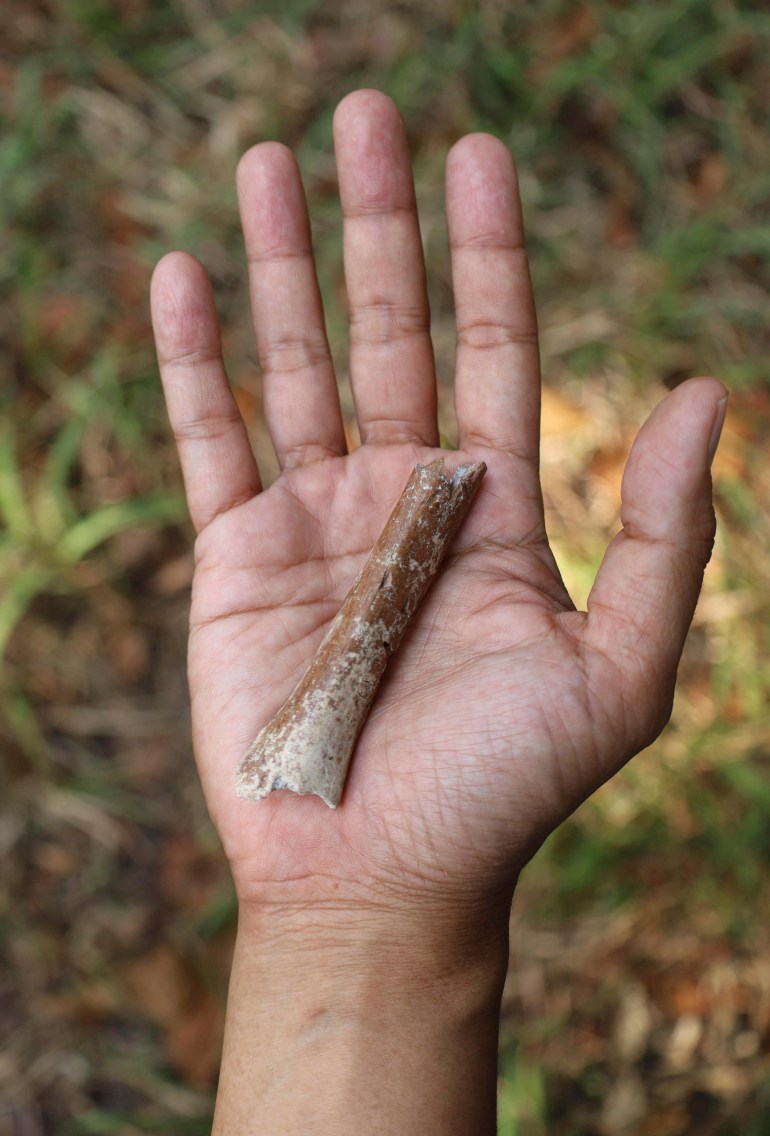The study shows that the ancestors of Homo floresiensis were even shorter and lived 700,000 years ago.
20 years ago, scientists discovered the remains of early humans that were about 1.07 meters long on the island of Flores in Indonesia.
Now a new study suggests that the ancestors of the diminutive Homo floresiensis, called “Hobbits” after the fictional characters in The Lord of the Rings, were even shorter.
“We didn’t expect to find small people in such an ancient place,” the study’s lead author, Yousuke Kaifu of the University of Tokyo, told the Associated Press in an email.
The latest findings, published Tuesday in the journal Nature Communications, follow the 2016 discovery of a small hand bone and teeth at a site called Mata Menge, about 72 kilometers (45 miles) from the cave where the remains were found. the first excavated.
Analysis of the 88mm (3.5 inches) bone suggests that the ancestors of the Hobbits were about one meter (3.3 feet) tall and lived about 700,000 years ago.

“They showed very convincingly that these were very young people,” Dean Falk, an evolutionary biologist at Florida State University who was not involved in the research, told the AP.
Scientists have been debating the origin of Homo floresiensis since the species was discovered in 2003.
Similarities between the remains of Mata Menge and the remains of Homo erectus from the Indonesian island of Java provide strong evidence that Homo floresiensis is descended from that species, the researchers say.
“This means that Homo floresensis experienced a dramatic reduction in body size from the large-bodied Homo erectus, whose body size was similar to that of modern humans,” in said Kaifu, adding that the remains of Flores were very similar to the remains of Homo erectus from 1.1 million to 800,000 years old. years ago from Sangiran in Java.
Homo erectus first appeared about 1.9 million years ago, with the same body parts as modern humans, but with a smaller brain.
“The discovery supports the theory that the evolution of island dwarfism is linked to the genes of a large-bodied group of Homo erectus that somehow migrated from the mainland. Asia to the isolated island of Flores, perhaps for a million years. in the past or longer,” said archeology professor and co-author Adam Brumm of Griffith University’s Australian Anthropology Research Institute.
They decreased significantly in body size on Flores between one million and 700,000 years ago, giving rise to Homo floresiensis, Brumm added.
“It is thought that the main reason for reducing this size in many generations is that being small has more advantages than being big on the island. Intermittent food deprivation is a major determinant of small body size,” said University of Wollongong paleontology professor and co-author Gerrit van den Bergh.
The fossilized bone found in Mata Menge was so small that an international team of researchers initially thought it must be from a child. However, microscopic examination of the bone sample showed that it was from an adult.
Ten remains of Homo floresiensis, including some described in 2016, at least four individuals – two adults and two children – were excavated from the Mata Menge sandstone, along with stone tools.
Homo floresiensis became extinct shortly after Homo sapiens arrived on the scene.
“I think our species may have been to blame,” Brumm said. “This particular lineage of early hominins appears to have been present on Flores for a very long time, and disappeared shortly after Homo sapiens was discovered in the area. That is not evident. it just happened.”
#study #reveals #early #Hobbit #people #Indonesia #Flores